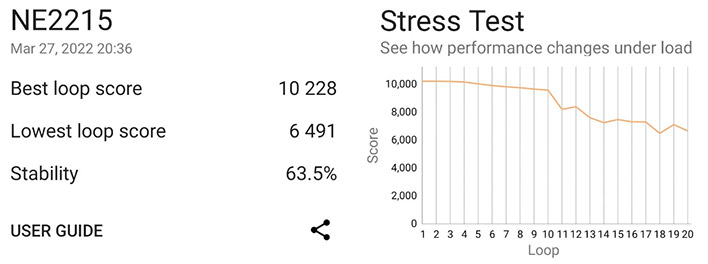OnePlus 10 Pro Review: A Solid Android Flagship With Innovative Cameras
OnePlus 10 Pro: Audio Quality, Performance And Battery Life
We didn’t experience any problems with calls and data speeds using the
OnePlus 10 Pro on T-Mobile’s sub-6GHz 5G network in San Francisco. This
phone also works fine on Verizon’s sub-6GHz 5G network, but not
AT&T’s. And unlike last year’s OnePlus 9 Pro, it lacks mmWave 5G.
Obviously, that’s a major drawback considering Apple, Samsung, and
Google’s flagships all support 5G on the majority of US carriers.
OnePlus 10 Pro Audio, Data, and Call Reception
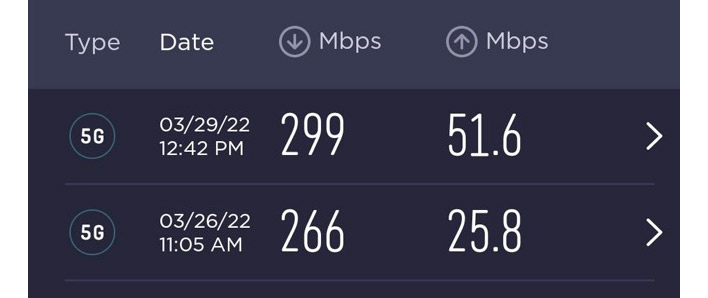
OnePlus 10 Pro Performance
The OnePlus 10 Pro packs Qualcomm’s flagship
4nm Snapdragon 8 Gen 1 SoC, and delivers blazing performance to match. As
you’d expect, it juggled our usual collection of productivity, social
media, entertainment, and gaming apps without breaking a sweat. Here in
the US, we only get one configuration, with 8GB of LPDDR5 RAM and 128GB
UFS 3.1 storage. Either way, there’s no microSD support.
While the OnePlus 10 Pro feels incredibly smooth and responsive, our benchmarks tell an interesting story (see below). The results are mixed, with some scores falling into Snapdragon 865 territory, and others being stellar. Like with the Galaxy S22 series, GPU workloads show significant performance gains over last year’s Snapdragon 888, but the OnePlus 10 Pro throttles less than Samsung’s flagships.
While the OnePlus 10 Pro feels incredibly smooth and responsive, our benchmarks tell an interesting story (see below). The results are mixed, with some scores falling into Snapdragon 865 territory, and others being stellar. Like with the Galaxy S22 series, GPU workloads show significant performance gains over last year’s Snapdragon 888, but the OnePlus 10 Pro throttles less than Samsung’s flagships.
OnePlus 10 Pro Geekbench Results
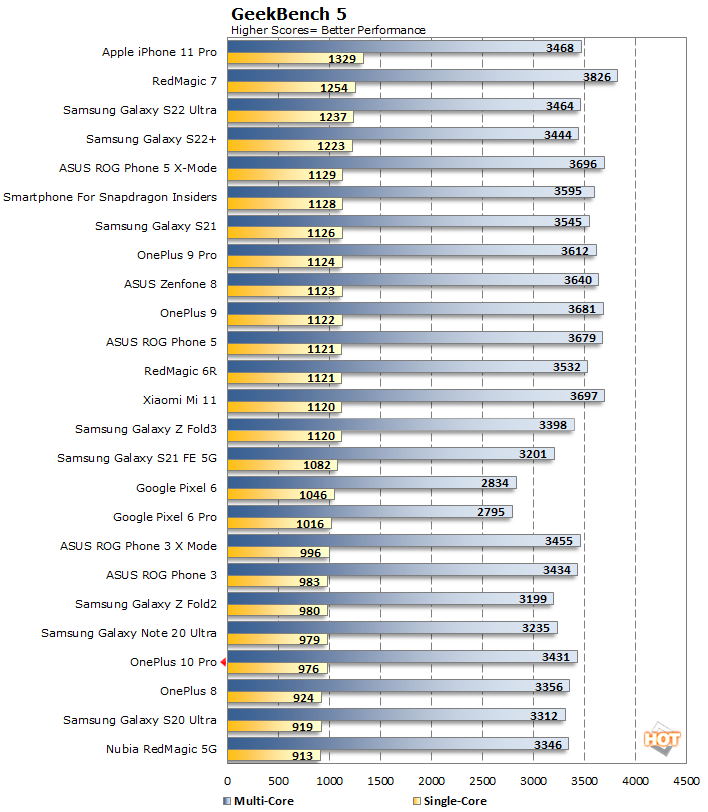
GeekBench isn't our favorite benchmark, as
it's purely synthetic and can be heavily targeted for optimization.
Regardless, the Snapdragon 8 Gen 1 processor usually delivers a slight
improvement in single thread performance but minimal improvement
in multi-threaded performance over previous generation Snapdragon
888-equipped Android flagships. But here, the OnePlus 10 Pro strangely lands among Snapdragon 865-equipped handsets for some reason.
OnePlus 10 Pro PCMark For Android Benchmarks
Futuremark's PCMark for Android is an
excellent suite of tests if you want to benchmark a wide range of tasks
on any handset -- things like image and video editing, as well as
lighter-duty, everyday workloads such as email and web browsing. When
you see the test running live, it's clear the scripted application tests
are carefully selected and tuned to make use of the each mobile platform
in a very controlled way...
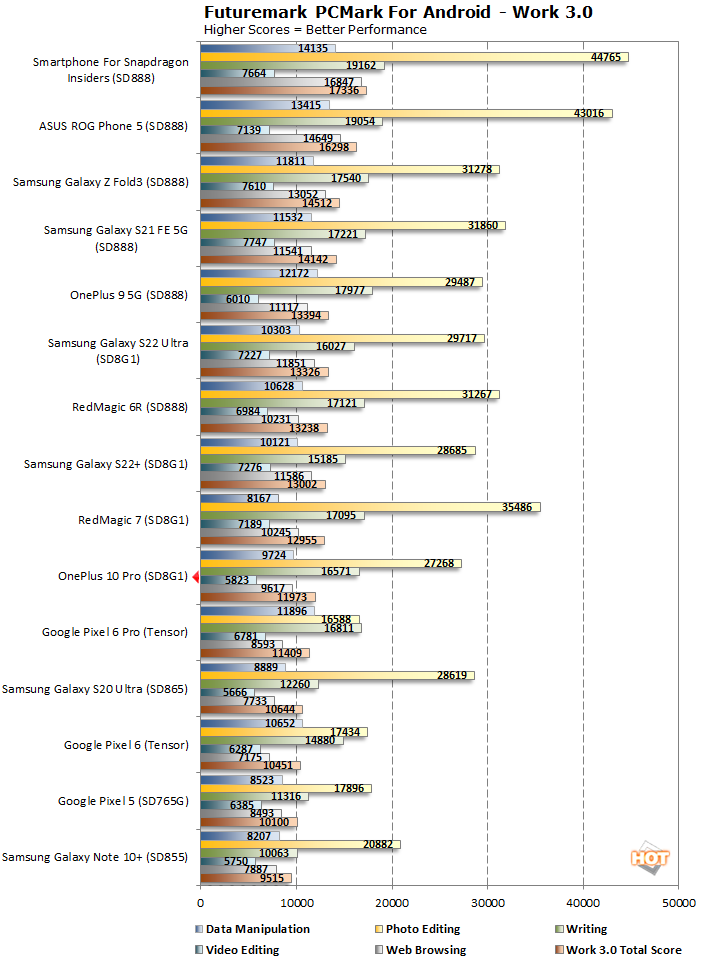
Here the OnePlus 10 Pro shows similar performance to previous generation flagships, falling just behind the RedMagic 7.
OnePlus 10 Pro AnTuTu 8 Benchmark Results
AnTuTu’s latest benchmark returns a number
of metrics ranked with somewhat nebulous scores, rather than frame rates
or time to complete. Here we're running the latest version of AnTuTu
across multiple Android devices. AnTuTu returns four top level
performance results which are all included here: CPU, RAM, 3D, UX (or
User Experience), along with a total score...

According to AnTuTu, the OnePlus 10 Pro offers a substantial increase in performance vs. previous generation Android handsets, coming in just below Samsung's Galaxy S22+ in overall score.

However, in AITuTu, which is specifically an image recognition and classification benchmark for AI and machine learning workloads, we see a different picture. Here there are big gains for the Snapdragon 8 Gen 1 powered OnePlus 10 Pro, but it doesn't catch two scores in our database from Snapdragon 888-powered devices. We've found this to be the case where some phones might not have the latest neural network models installed in the phone's firmware packages, so an update from OnePlus could easily change this picture.

However, in AITuTu, which is specifically an image recognition and classification benchmark for AI and machine learning workloads, we see a different picture. Here there are big gains for the Snapdragon 8 Gen 1 powered OnePlus 10 Pro, but it doesn't catch two scores in our database from Snapdragon 888-powered devices. We've found this to be the case where some phones might not have the latest neural network models installed in the phone's firmware packages, so an update from OnePlus could easily change this picture.
3D Graphics And Gaming Benchmarks With The OnePlus 10 Pro
Next we're checking how the OnePlus 10 Pro
series compares in GFXBench, which has been one of the standard mobile
graphics/gaming performance benchmarks for years. To ensure that display
refresh (v-sync) and resolution aren't limiting factors, we're comparing
off-screen test results here. GFXBench tests OpenGL ES graphics
workloads and we're specifically testing OpenGL ES 2.0 and 3.0.
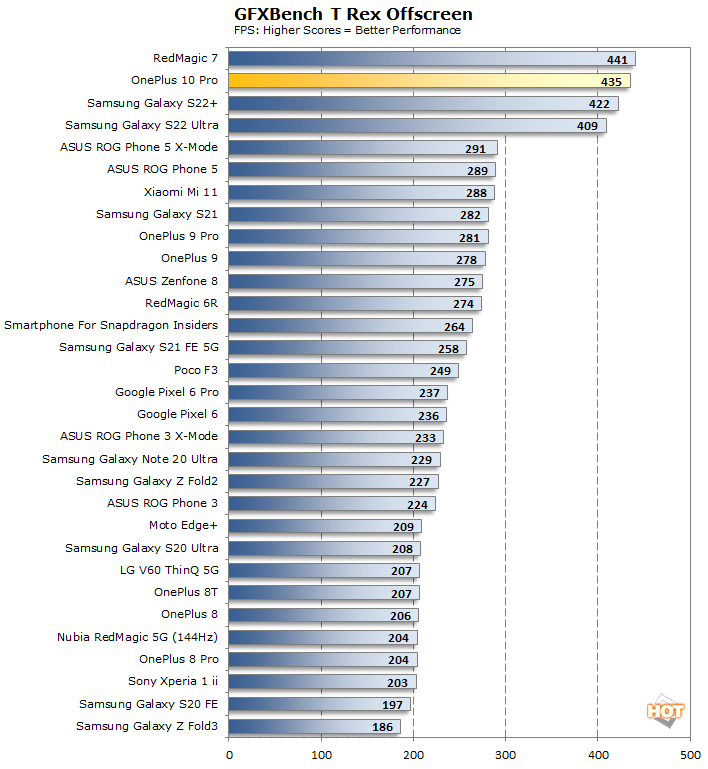
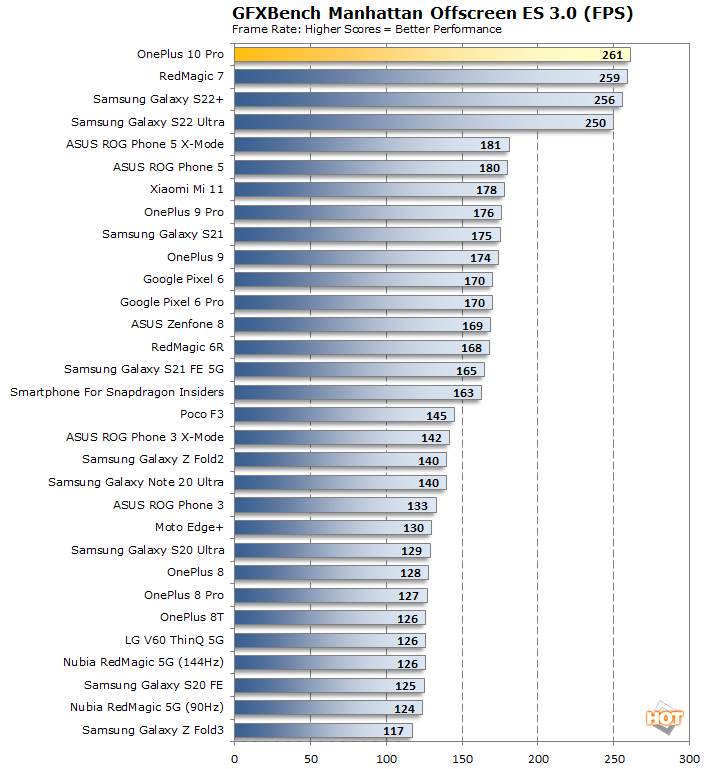
Now we're seeing the kind of performance
improvement we expected from the Snapdragon 8 Gen 1-equipped OnePlus 10
Pro. This new phone clearly beat Snapdragon 888-powered
devices, and comes out way ahead of ASUS'
ROG Phone 5 in X-Mode. It even best Apple's latest iPhone 13 Pro
in the more modern Manhattan test, which is a major coup.
Futuremark's 3DMark Sling Shot is a newer benchmark module that's been added to the 3DMark mobile suite. Unlike previous gen 3DMark mobile tests, Sling Shot is a much more advanced OpenGL ES 3.1 and Metal API-based benchmark that employs more advanced rendering techniques, like volumetric lighting, particle illumination, multiple render targets, instanced rendering, uniform buffers and transform feedback.
Futuremark's 3DMark Sling Shot is a newer benchmark module that's been added to the 3DMark mobile suite. Unlike previous gen 3DMark mobile tests, Sling Shot is a much more advanced OpenGL ES 3.1 and Metal API-based benchmark that employs more advanced rendering techniques, like volumetric lighting, particle illumination, multiple render targets, instanced rendering, uniform buffers and transform feedback.

3DMark Sling Shot Extreme Benchmark
We're running this test in off-screen mode once again to remove display resolution differences from the equation. This lets us compare cross-platform results more reliably...
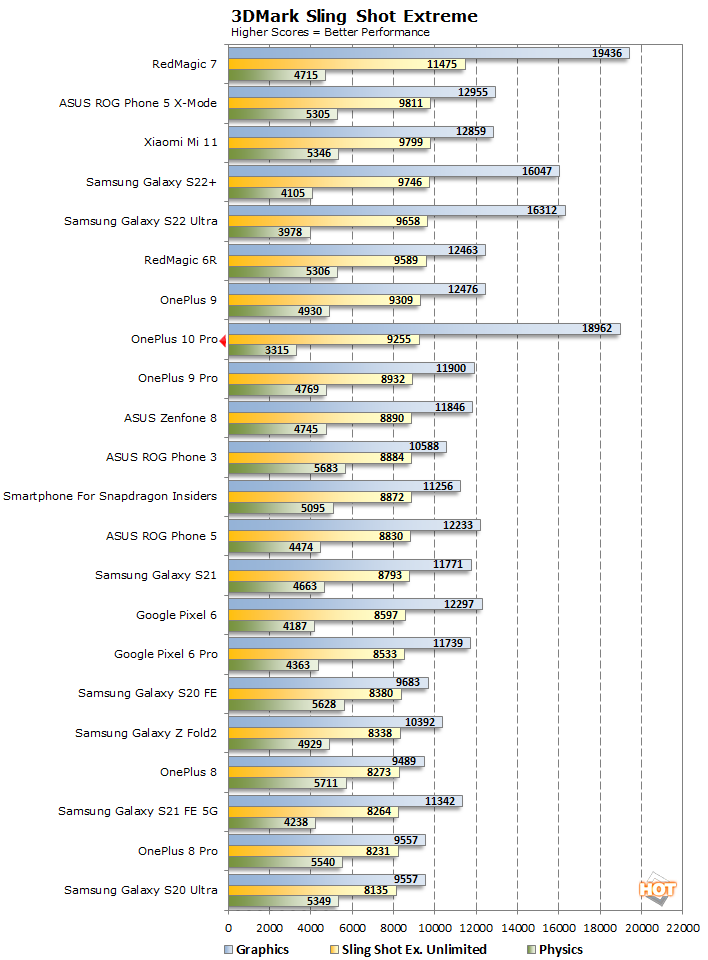
Here we see no significant improvement to
the overall score over Snapdragon 888-equipped flagships. Still, the
OnePlus 10 Pro performs extremely well in this test, beating every other
Android flagship but the RedMagic 7 in the graphics score by a wide margin.
OnePlus 10 Pro 3DMark Wild Life Benchmark Tests
3DMark Wild Life is the latest
cross-platform test from UL. Its primary purpose is to measure GPU
performance across platforms, and two distinct tests are available.
The standard Wild Life test is designed to give feedback on how a
game performs over a short period of time. With mobile games, people
typically play in brief spurts when they find some free time; be it
on the bus, on the subway, or a quick battle royale session over
lunch break. The 3DMark Wild Life Stress Test, on the other hand,
shows how a device performs over a longer stretch of time, and takes
note of performance degradation that might crop up due to increased
heat levels and throttling.


3DMark Wild Life is a significantly more taxing graphics benchmark that employs cutting-edge mobile game engine technologies to deliver impressive visuals -- as you can see in the screen shot above. Here the Snapdragon 8 Gen 1-powered OnePlus 10 Pro delivers a massive improvement in performance versus some of the fastest Snapdragon 888-equipped devices, and even comes within striking distance of the iPhone 13 Pro, which is running on its Metal API in this test.

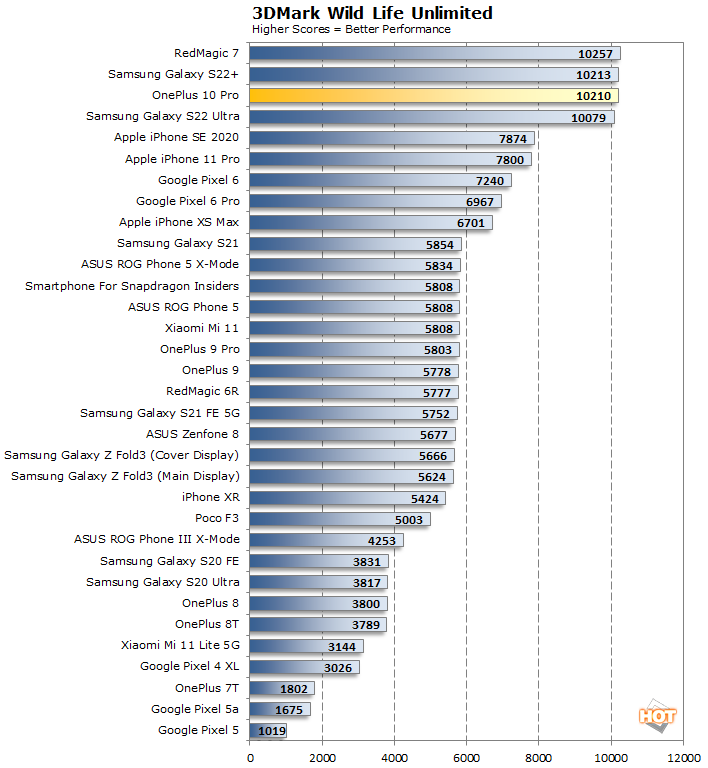
3DMark Wild Life is a significantly more taxing graphics benchmark that employs cutting-edge mobile game engine technologies to deliver impressive visuals -- as you can see in the screen shot above. Here the Snapdragon 8 Gen 1-powered OnePlus 10 Pro delivers a massive improvement in performance versus some of the fastest Snapdragon 888-equipped devices, and even comes within striking distance of the iPhone 13 Pro, which is running on its Metal API in this test.
Unfortunately, the OnePlus 10 Pro does exhibit
similar (but lesser) throttling to what we experienced with the Galaxy S22 series,
managing a stability score of 63.5% in the Wild Life Stress test. This isn't too surprising, as most
Android phones we test -- as well as iPhones -- throttle pretty hard
under load. Gaming phones like the ASUS ROG series and a few
others are notable exceptions here with respect to throttling,
however.
OnePlus 10 Pro 5G Other Features and Battery Life
Other specs are pretty standard for a modern flagship. You’ll find
sub-6GHz 5G on board, plus CAT 18 LTE, dual-band WiFi 6E (802.11ax),
Bluetooth 5.2 (LE), NFC, and dual-band A-GPS/ GLONASS / BeiDou /
GALILEO positioning – not to mention the usual collection of sensors.
The in-display optical fingerprint sensor is fast and reliable, and so
is face unlock. In addition, haptics feel absolutely fantastic.
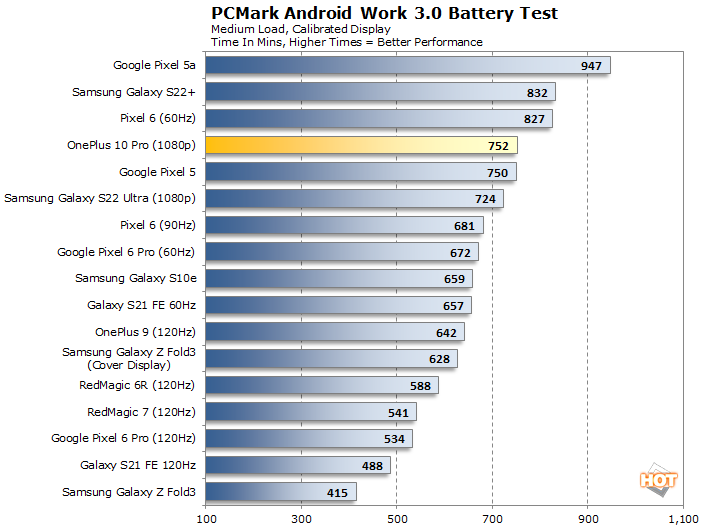
Battery life is pretty solid. The OnePlus 10 Pro packs a 5000mAh battery, which lasted 12 hours and 32 minutes at 120Hz (adaptive, 1080p) in our PCMark battery test. It supports SuperVOOC 65W wired fast charging and AirVOOC 50W Qi-compatible wireless fast charging – plus reverse wireless charging. There’s even a 65W SuperVOOC charger in the box (worth $35), which also doubles as a 45W USB-PD charger.
It’s also worth mentioning that the OnePlus 10 Pro offers 80W wired fast charging in some markets (like China and India). Apparently the 80W version of SuperVOOC isn’t compatible with 110/120V power grids, so we’re not getting it here in North America. The 50W AirVOOC wireless charging stand costs $70, but that doesn’t include a brick.

